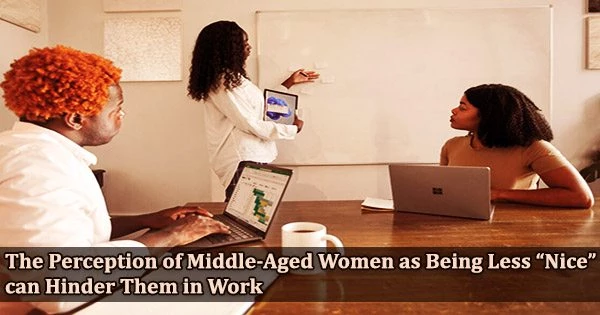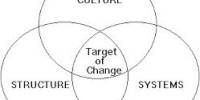Jennifer Chatman was a popular tenured professor at the Haas School of Business at UC Berkeley, and she was accustomed to giving excellent lectures. But as she grew more experienced and into her 40s, she noticed an odd trend: Her student class evaluations started getting worse.
“If anything, my teaching was getting even better, but students were harder on me,” she says. What’s more, when she spoke to her middle-aged female colleagues, she found that they were experiencing similar declines, while the men around them were not.
Chatman went on to win Haas’s top award for teaching excellence and now leads the Berkeley Haas faculty as Associate Dean of Academic Affairs, but her latest research offers empirical support for her experience: An analysis showed that while women’s assessments of professors quickly fall from their first peak in their 30s and reach their lowest point around age 47, those of male professors remain steady throughout time.
The analysis is a section of a brand-new study that was co-authored by Professor Laura Kray and other authors and was just published in the journal Organizational Behavior and Human Decision Processes.
The overall conclusion: Both men and women are considered as more capable or effective, but only women are seen as less warm as they age, making them the subject of harsher judgment.
Chatman notes that at a time when women are only just beginning to approach parity in business schools and still make up only 6.4% of S&P 500 CEOs, the implications can be deadly to career ambition.
“Middle age is a make-or-break time, when people are being groomed and considered for the top jobs,” says Chatman, the Paul J. Cortese Distinguished Professor of Management and co-director of the Berkeley Culture Center. “We have to look beyond the pipeline to see what’s actually happening in terms of the experiences women are having throughout their careers.”
Perceptions of “warmth” and “agency” are two fundamental measures that social science researchers have shown are critical to judging those around us.
“The first thing we notice about someone is whether they are warm or cold,” explains Kray, who is the Ned and Carol Spieker Chair in Leadership and faculty director of the Center for Equity, Gender, and Leadership at Berkeley Haas. “It tells you something about whether they have good or bad intentions towards you. ‘Agency’ addresses the question of how capable we perceive them to be in achieving those intentions.”
Middle age is a make-or-break time, when people are being groomed and considered for the top jobs. We have to look beyond the pipeline to see what’s actually happening in terms of the experiences women are having throughout their careers.
Professor Jennifer Chatman
According to earlier studies, men are generally thought of as having more agency or as being more capable and assertive, whereas women are stereotyped as being cozier. This is a result of historical divisions when males were expected to hunt or labor and women were in charge of raising the children.
“The stereotypes have outlived their utility,” Chatman said, adding that friction can emerge when women run counter to those stereotypes by achieving a position of greater agency at work.
Studies have also shown that perceptions of both warmth and agency generally increase with age. However, no scholars have previously looked at both gender and age together to show how perceptions of men and women may differ. In a series of studies, Chatman and Kray set out to do just that, along with Haas doctoral researcher Sonya Mishra; Haas graduate Daron Sharps, Ph.D., now at Pinterest; and Professor Michael North of New York University.
‘Steve’ vs. ‘Sue’
In an initial study, the researchers presented participants with a headshot of a hypothetical supervisor at a tech company either a man, “Steve Wilson,” or a woman, “Sue Miller.” They were then given identical information about either Steve’s or Sue’s career and asked to rate them on adjectives such as “forceful” or “gentle” in middle age compared to when they were younger.
In line with earlier studies, participants gave both people better ratings as they aged for agency traits. However, even with comparable descriptions and such little data to go on, the participants evaluated Sue less favorably as she grew older for warmth-related qualities, but Steve’s scores remained constant.
“It’s just stunning,” Chatman says. “These stereotypes are so hard-wired and deeply entrenched that they come out even when absolutely identical information is provided about a man and a woman.”
In a second study, the researchers recruited nearly 500 executives enrolled in executive leadership courses to ask their actual coworkers to rate their assertiveness and agreeableness. It’s interesting to note that evaluations for warmth were the same for women of all ages, yet older men in the class earned greater ratings for warmth than did younger men.
“In these circumstances, women were not perceived as less warm in an absolute sense, but they’re still being perceived as less warm compared to men,” says Kray. “So anytime they are being considered in juxtaposition to men at that age group, they may be at a disadvantage.”
Evaluations of university professors
In the final study, Chatman and Kray went back to the original source of the research to analyze a large dataset of university professor evaluations, allowing them to literally compare a person’s performance to their younger selves to see how it changed with age. (The researchers did their best to control for factors such as whether professors had children or took on extra non-teaching work as they rose through the ranks.)
Sure enough, they found that male professors’ evaluations remained consistent over time. Meanwhile, evaluations for female professors quickly declined from their initial peak in their 30s, hitting a low point around age 47. After that, they steadily increased again, achieving parity with men by their early 60s.
“At that point, there are different stereotypes of women, and they may benefit from being seen as more grandmotherly,” says Kray.
This is an especially dramatic finding because teaching is a skill that should improve with age and experience, Chatman points out.
“It did for men, but for women, they were evaluated as worse teachers compared to their own earlier performance, a finding that strongly implicates stereotypes rather than actual performance,” says Chatman.
The researchers also examined the actual remarks submitted by students using linguistic software that recognized hundreds of adjectives in order to delve deeper into the causes of the reduction. They found that words such as “caring,” “nice,” and “helpful,” declined for women along with their scores.
“When women were getting their lowest teaching ratings, there was an uptick in complaints about their personality,” Kray says.
All of these results confirm the researchers’ suspicions that even as women gain more power and capability as they gain experience, they are dinged for not fulfilling stereotypical prescriptions for “niceness.”
“There seems to be something about the very nature of career progression that seems to lead people to perceive women as less warm and therefore less likable as their agency increases,” says Chatman.
These findings partially validate women’s experiences by illuminating why they can encounter resistance and stagnation at a time when their careers are advancing in middle age.
Awareness is essential
The researchers advise against assuming, however a challenge that every woman who has endured a meeting with overconfident men already knows that women should try to seem friendlier or less capable.
“I would hate for the message to be that women need to be more careful about how they present themselves,” Chatman says, “because these findings already point to the fact that women have a narrower band of acceptable behavior.”
Instead, the researchers hope that the results can help create awareness that bias may affect how women are considered for promotions, differently from how men are considered.
“We need to create systems and standardization for how we discuss and evaluate candidates,” Kray says, “and either exclude feedback on personality, or make sure it is considered equally for men.”
As women do rise through the ranks, she adds, their own firsthand knowledge of these persistent stereotypes can help them educate the men around them to make decisions based on merit and ability, rather than stereotypes about perceived warmth.
“As women move into positions of evaluating others,” Kray says, “they should not be afraid to speak up about double-standards and be change agents from within committees charged with evaluating others’ work.”
















